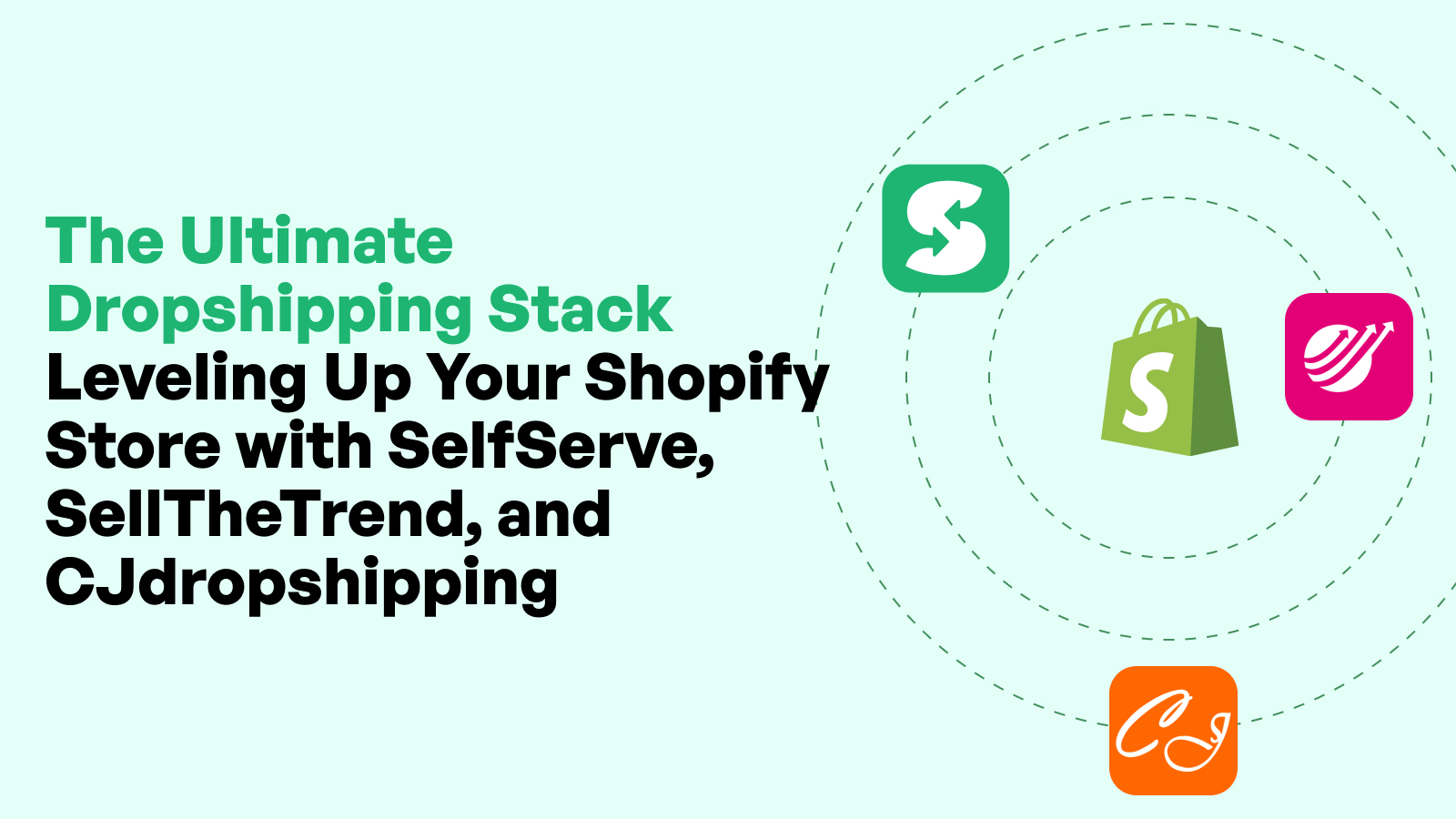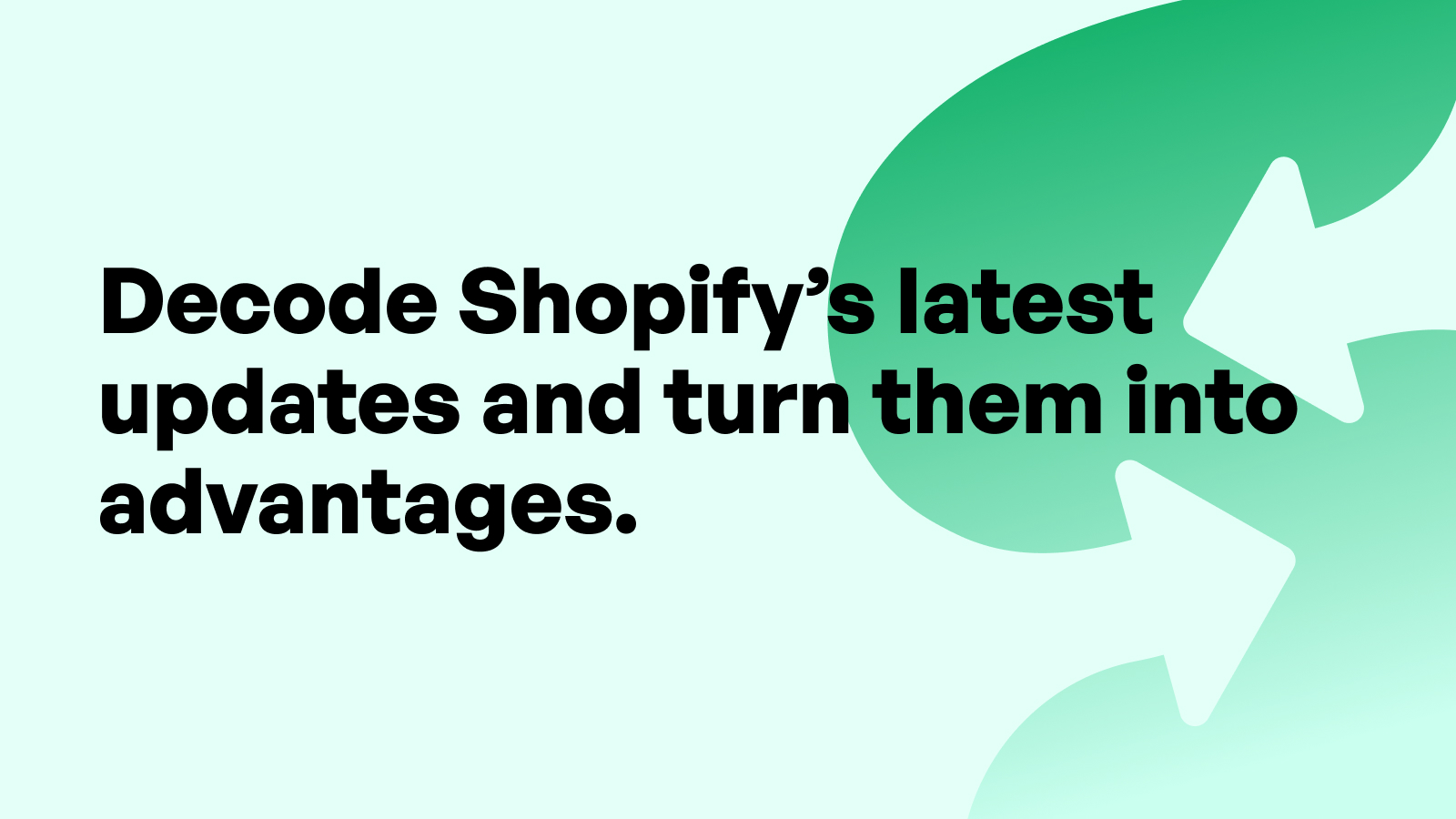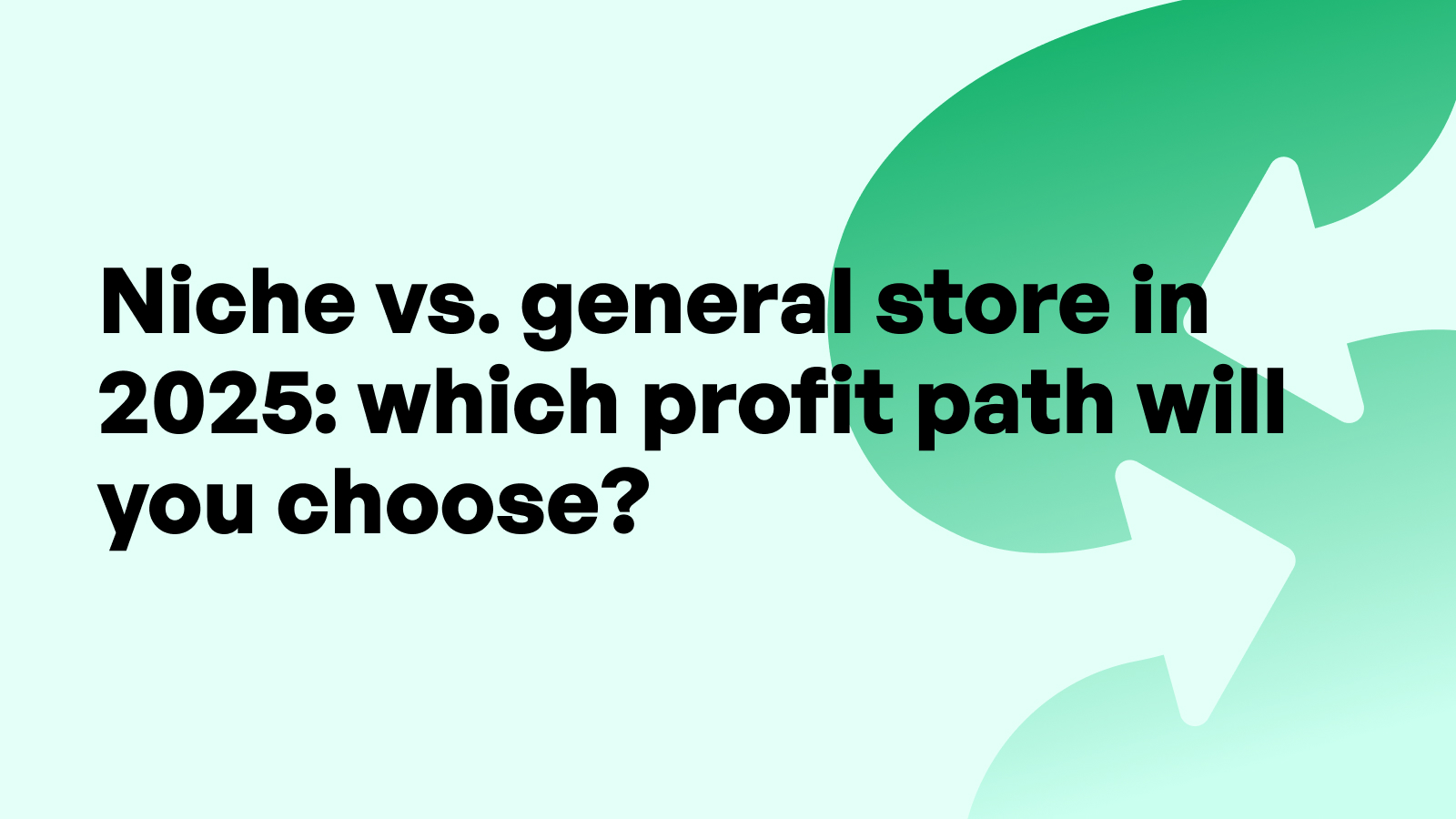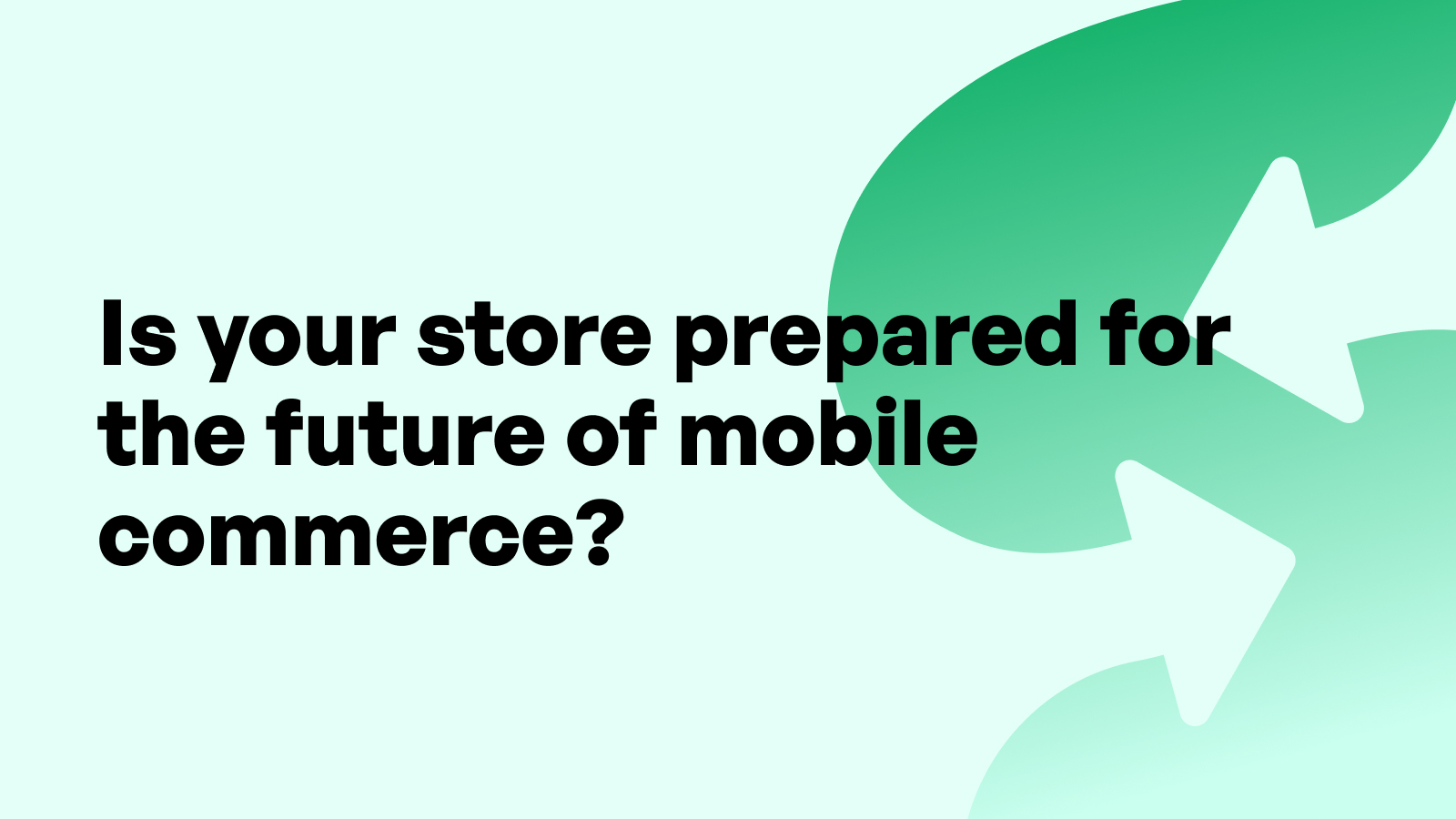How to Run Flash Sales and Promotions That Don’t Harm Your Margins
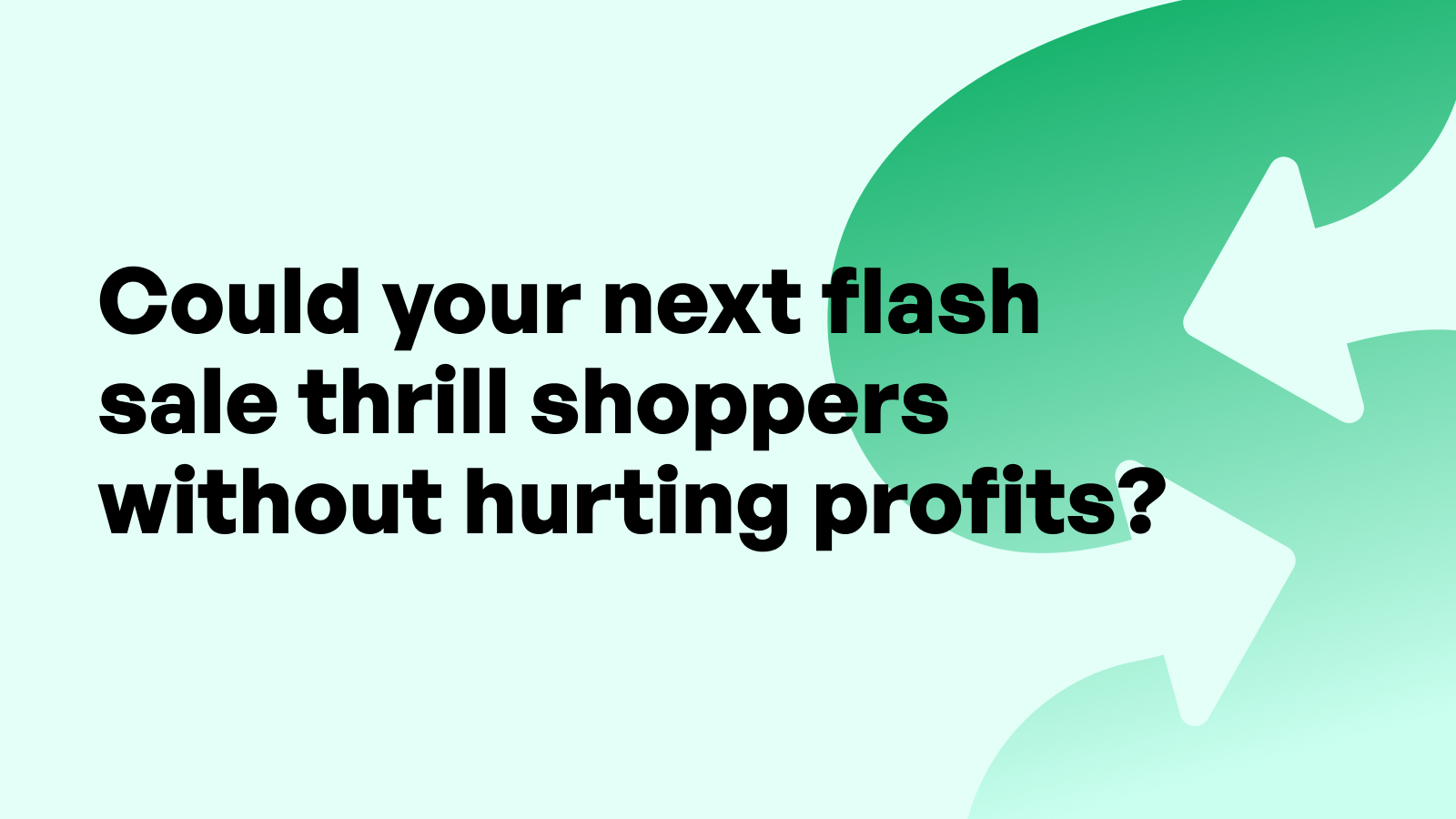
Introduction to Smart Flash Sales and Promotions
For Shopify merchants, flash sales and promotional events are among the most powerful tools to drive quick bursts of revenue, increase visibility, and clear out inventory. However, when executed without a careful margin-conscious strategy, these short-term revenue boosts can leave lasting damage to your bottom line. The challenge lies in balancing the urgency and excitement of flash sales with a focus on profitability and long-term customer loyalty.
This comprehensive guide walks Shopify merchants through the essentials of planning and executing high-impact promotions that preserve — and in some cases even improve — profit margins. From understanding the psychology of consumer urgency to implementing smart pricing, bundling, and customer segmentation tactics, this article delivers a deep dive into sustainable sales strategies. Whether you’re launching your first flash sale or trying to improve ROI on your next campaign, this guide will help you drive conversions without compromising the financial health of your Shopify store.
The Importance of Margin-Conscious Sales Strategies
Understanding Profit Margins in E-commerce
Profit margin is the difference between how much a product costs you and the final price you sell it for. For Shopify merchants, maintaining a healthy margin means ensuring your business has the cash flow to cover operational costs, invest in marketing, and continue growing. Flash sales often encourage merchants to lower prices aggressively to create urgency, but without proper calculations, they can significantly erode margins. Even a discount as small as 20% can dramatically affect profitability if not strategically planned.
It’s essential to break down both gross and net profit margins for each product and campaign. Gross margin accounts for direct costs like product sourcing and shipping, while net margin includes broader operational expenses. If a flash sale results in an influx of orders but reduced average profit per unit, your store could end up doing more work for less return. A smarter approach evaluates each discount in the context of overall business health.
How Promotions Can Eat Into Your Bottom Line
While promotions can increase volume, they often introduce hidden costs. Shipping, packaging, fulfillment labor, and increased customer service volume all add up during high-velocity events like flash sales. Shopify merchants may also encounter increased return rates when products are bought on impulse. These post-sale issues can quietly chip away at margins if not accounted for.
Another hidden cost comes from the psychological impact on customers. Running frequent deep discounts can condition buyers to wait for the next sale instead of purchasing at full price. Over time, this erodes your brand value and creates price sensitivity, making it harder to sell products at regular pricing.
Aligning Promotions with Long-Term Business Goals
Promotions should serve as stepping stones toward larger business objectives — whether that’s growing your email list, moving stagnant inventory, or boosting customer retention. For Shopify merchants, every sale must be intentional. If a flash sale doesn't align with your brand, inventory goals, or margin targets, it's likely doing more harm than good.
A margin-conscious strategy doesn’t mean avoiding promotions altogether. Instead, it’s about designing sales that attract customers while still respecting your financial framework. That starts with understanding your data and ends with thoughtful execution that supports your store’s long-term growth.
The Psychology Behind Flash Sales
Consumer Behavior During Limited-Time Offers
Flash sales tap into primal consumer instincts — urgency, scarcity, and exclusivity. The shorter the duration, the stronger the emotional impulse. Customers fear missing out on a deal, and this fear triggers a fast decision-making process that bypasses the usual buying hesitations. For Shopify merchants, this psychological effect is a double-edged sword: it can increase conversions quickly but also lead to impulsive purchases that result in returns or lower satisfaction if the product doesn’t meet expectations.
Understanding this behavior is essential. Short bursts of availability work best when coupled with clear product benefits, transparent pricing, and hassle-free checkout. The goal is not just to sell but to create a smooth experience that encourages repeat behavior.
Fear of Missing Out (FOMO) and Its Role in Conversions
FOMO is a psychological trigger that’s especially potent in e-commerce. When users see countdown timers, limited quantities, or "only 3 left in stock" messages, it signals urgency. Shopify merchants can capitalize on this by combining social proof with scarcity tactics — showing how many customers are viewing the product or how quickly it's selling out.
However, FOMO should be deployed ethically. False scarcity can lead to customer mistrust and damage your brand's credibility. Shopify’s ecosystem allows for tools and apps that automate scarcity tactics in an honest and effective way.
Creating Urgency Without Overusing Discounts
Urgency doesn’t have to mean deep price cuts. Shopify merchants can use limited-time access, exclusive bundles, or early access for email subscribers to trigger urgency. Offering “members-only” pricing or flash sales for loyalty program members also creates a sense of exclusivity without affecting regular margins.
Incentivizing urgency through time-sensitive benefits — like free express shipping or exclusive gifts — preserves product value while still motivating buyers. This approach helps Shopify merchants retain control over margins while maintaining the excitement that drives conversion during a flash sale.
Pre-Sale Planning for Margin Protection
Setting Goals: Revenue vs. Profit
Before launching a flash sale, every Shopify merchant should clearly define the campaign’s objectives. Are you trying to increase revenue or profit? These are not the same. A promotion that doubles revenue but halves margin may look successful on the surface but be unsustainable in practice.
Set profit-based goals that include margin thresholds for each product. Determine a breakeven point and model different discount levels to find the sweet spot where volume increases justify the margin sacrifice. Tools like Shopify’s profit calculators or custom spreadsheets can aid in simulating outcomes before launching the promotion.
Choosing the Right Products for Flash Sales
Not all products are suited for flash sales. The best candidates are high-margin items, seasonal inventory, or products with low holding costs. Shopify merchants should also consider including products that are frequently bought together to encourage higher cart values.
Avoid discounting bestsellers that already convert at full price. Instead, use those as anchor products to drive traffic to your site, then cross-sell lower-performing inventory. This tactic not only protects margins but helps clear out deadstock in a strategic way.
Analyzing Inventory and Pricing Data
Inventory management is crucial before running a flash sale. Overselling creates fulfillment headaches and damaged reputations, while underestimating demand means lost revenue. Use Shopify analytics or apps that integrate with your store to forecast demand based on past sales data.
Check real-time product margins, and ensure you’re not discounting items that are already tight on profit. If margins are slim, explore bundling options or include free shipping thresholds to raise average order value (AOV) without touching base pricing.
Segmenting Audiences for Personalized Offers
Segmented campaigns typically outperform blanket promotions. Shopify merchants can use customer tags, purchase history, and browsing behavior to target different segments with tailored offers. For example, offer VIP discounts to high-LTV customers or bundle incentives for new subscribers.
Personalization not only improves conversion but also minimizes unnecessary margin loss by ensuring discounts are directed toward the most valuable or price-sensitive segments. This creates a more efficient promotional engine that respects both sales goals and profitability.
Crafting Promotion Types That Safeguard Margins
Designing the right type of promotion is essential to protecting profit margins during a flash sale. For Shopify merchants, the goal is to use strategies that incentivize larger purchases or more frequent buying without significantly discounting individual items.
Time-Limited Offers vs. Quantity-Limited Offers
Time-limited offers — such as “50% off for 24 hours” — create urgency but can lead to rushed decisions and inflated return rates. Quantity-limited offers, on the other hand, focus on scarcity: “Only 50 units available at this price.” The latter tends to attract more committed buyers and is particularly effective for Shopify merchants with limited-edition or seasonal products.
Quantity limitations also allow for greater control over inventory and predictability in profit modeling. By capping the number of discounted items, merchants can create excitement while limiting exposure to margin erosion.
Bundles and BOGO Deals with Controlled Margins
Bundles and Buy One, Get One (BOGO) deals can be margin-friendly when structured carefully. For example, combining a high-margin product with a slower-moving item can increase perceived value without heavily discounting either product. Shopify merchants should calculate the blended margin of bundles to ensure profitability.
A BOGO deal doesn’t always mean giving something away for free. Instead, offering “Buy One, Get One 50% Off” or “Buy One, Get a Free Sample” are great ways to increase units per transaction while minimizing the cost burden. Apps on Shopify allow for easy automation and tracking of such deals.
Tiered Discounts Based on Cart Value
Another effective method for safeguarding margins is using tiered discounts that encourage larger purchases. For example, “Spend $50, get 10% off; Spend $100, get 20% off.” This encourages customers to increase their cart size to reach the next discount threshold, which in turn boosts your AOV.
Shopify merchants can set cart-based conditions using discount apps or native Shopify scripts. These offers allow merchants to offset the discount with higher sales volumes, ultimately improving profitability even during a flash sale.
Loyalty-Driven Discounts for Repeat Customers
Rewarding loyal customers with exclusive discounts is a win-win for Shopify merchants. Not only do you reduce customer acquisition costs, but you also boost lifetime value (LTV) while limiting discounts to a high-conversion audience.
Loyalty-based flash sales — promoted via email or through membership portals — also increase engagement and brand advocacy. Integrating these promotions with Shopify loyalty apps allows merchants to track usage, assign points, and segment users effectively. By limiting deep discounts to your most valuable customers, you protect your margins while deepening customer relationships.
Pricing Strategies That Don’t Devalue Your Brand
Running flash sales that still support brand perception requires thoughtful pricing techniques. Shopify merchants must ensure that any discounts they offer enhance customer appeal without reducing perceived value or brand prestige.
Psychological Pricing and Anchoring Techniques
Psychological pricing, like ending prices in .99 or .97, subtly suggests value without appearing as a deep discount. Anchoring involves placing a discounted product next to a more expensive item to make the lower price seem like a better deal. For Shopify merchants, these strategies work well when used within flash sale layouts or product pages.
An effective method is to show the original price crossed out next to the discounted price, supported by a short message like “limited-time offer.” This reinforces urgency while maintaining transparency. Anchoring is particularly useful when introducing new product tiers or upsell options.
Using MSRP and MAP to Maintain Perceived Value
Manufacturer’s Suggested Retail Price (MSRP) and Minimum Advertised Price (MAP) can be used to uphold brand value, especially when selling premium products. Shopify merchants who sell via dropshipping or wholesale agreements must adhere to MAP policies, which often restrict how low an item can be advertised.
When running flash sales, displaying MSRP or using comparative language like “normally $89, now $69” helps retain the product's perceived value. It's critical not to undercut your pricing so much that customers start expecting perpetual discounts.
Incorporating Free Shipping Strategically
Free shipping is a powerful conversion driver. Instead of offering steep discounts on products, Shopify merchants can use free shipping thresholds to increase cart value. For instance, “Free shipping on orders over $75” not only encourages larger purchases but also maintains full pricing on items.
This approach is ideal during flash sales as it preserves product margins and allows merchants to offset shipping costs by increasing order volume. Additionally, using Shopify apps or built-in shipping profiles can help automatically apply and communicate these incentives during checkout.
Tools and Technology for Running Effective Flash Sales
Technology plays a vital role in executing seamless and profitable flash sales. Shopify’s ecosystem offers a suite of tools to plan, launch, and optimize promotions without manual oversight.
Shopify Native Tools for Discounts and Automation
Shopify’s native features such as Discount Codes, Automated Discounts, and Launchpad (available on Shopify Plus) empower merchants to schedule, automate, and manage flash sales efficiently. With these tools, you can pre-schedule sales, monitor performance in real-time, and apply discounts automatically based on customer behavior.
Shopify Scripts, also available to Plus merchants, allow for granular customization of the checkout process, such as tiered discounts, free gifts, or exclusive pricing for specific customer groups. These tools help streamline execution while giving Shopify merchants greater control over how and when promotions are applied.
Best Shopify Apps for Flash Sales Management
Beyond native features, numerous Shopify apps enhance flash sale capabilities. Apps like "Bold Discounts," "Ultimate Special Offers," and "Fera.ai" enable merchants to create dynamic offers with real-time countdown timers, pop-ups, and urgency triggers.
These tools also offer valuable features such as scheduling, inventory countdowns, and customizable banners. For Shopify merchants seeking to run flash sales frequently, investing in such tools can improve execution speed and customer experience while protecting profit margins.
Integrating Email and SMS Campaigns for Instant Reach
Communication is everything during a flash sale. Shopify merchants should leverage email marketing platforms like Klaviyo or Omnisend, which integrate directly with Shopify. Pre-sale teasers, launch alerts, and last-chance reminders create anticipation and drive conversions.
SMS marketing adds urgency due to its high open rates and instant visibility. Short, concise messages with a clear CTA (“Only 2 hours left! Shop now”) can significantly boost performance during the final hours of a flash event. Both channels help merchants reach their audience quickly without relying on paid ads.
Using Countdown Timers and Urgency Widgets Effectively
Countdown timers — whether on product pages, landing pages, or cart — visually reinforce urgency. Shopify merchants can implement these via apps like "Hurrify" or "Ultimate Scarcity Pro." Be mindful not to overuse these widgets as fake urgency can damage brand trust.
When used honestly and sparingly, countdown timers increase buyer momentum and decrease cart abandonment. Position them prominently but tastefully to support your sales narrative without overwhelming the user experience.
Promoting Flash Sales Without Paid Ads
Driving traffic without dipping into ad budgets is possible — and often more profitable. Shopify merchants can promote flash sales effectively through owned and earned channels that maximize ROI.
Leveraging Owned Channels: Email, SMS, and Social Media
Email and SMS remain top performers when it comes to promoting flash sales. Since these are channels you control, you can schedule campaigns with pinpoint timing and segment your audience for optimal relevance. Using your Shopify CRM and integrations with platforms like Klaviyo, you can personalize emails based on past behavior and purchase history.
Social media is another essential owned channel. Shopify merchants should use Stories, Reels, and scheduled posts to build excitement ahead of the sale. Live shopping events and limited-time offer posts with countdown stickers can amplify engagement.
Creating Buzz Through Influencer Collaborations
Influencers are powerful allies for flash sales when chosen carefully. Instead of paying for reach, Shopify merchants can collaborate with micro-influencers or brand ambassadors for trade promotions, such as early access to the flash sale or exclusive codes.
Encourage these influencers to share real-time experiences during the sale period. Their content adds social proof, credibility, and urgency, especially if they show limited inventory or fast sellouts. A strong influencer campaign can expand reach without adding ad spend.
Retargeting Existing Customers with Organic Content
Retargeting isn’t just for paid ads. Shopify merchants can use their blog, email flows, and organic posts to bring back previous customers. Showcase related products, user-generated content, and testimonials from past flash sales to build trust and trigger interest.
Using Shopify’s automation tools, set up flows that remind dormant customers of upcoming events and flash sale calendars. This keeps your base warm and reduces your reliance on cold traffic sources.
Analyzing and Measuring Flash Sale Performance
Every flash sale is a learning opportunity. Shopify merchants must monitor campaign metrics to understand what worked, what didn’t, and how to improve next time.
Key KPIs: Conversion Rate, AOV, and Margin Impact
Track conversion rate to gauge how many visitors are actually buying during the sale. Use AOV (Average Order Value) to assess whether bundling and tiered discounts are lifting cart size. Margin impact helps you ensure the flash sale is financially viable — compare pre-sale and post-sale margins for a full picture.
Shopify’s built-in reports provide a good start, but integrating Google Analytics and apps like Glew or LittleData gives more detailed insights. You should also compare these metrics against baseline performance to see relative gains.
Post-Sale Customer Behavior Tracking
Monitor what happens after the sale: Are customers returning products? Are they coming back for full-price items? Shopify merchants can use customer journey tools to assess loyalty and churn rates.
Segment customers who purchased during the flash sale and set up automated post-sale flows to cross-sell related products, request reviews, or invite them to a loyalty program.
Tools for Revenue Attribution and ROI Analysis
Attribution is essential when running multichannel promotions. Use UTMs and conversion tracking to understand where your buyers came from. Shopify merchants can benefit from analytics tools like Triple Whale, Elevar, or Segments to assign revenue across email, SMS, and organic channels.
This allows for smarter budgeting and better ROI analysis for future promotions. It’s not just about how much you sold — but how efficiently you did it.
Avoiding Common Flash Sale Mistakes
Even experienced Shopify merchants can fall into traps that erode profitability or harm brand integrity. Avoiding these common mistakes is essential for long-term success.
Over-Discounting and Undermining Brand Value
Deep discounts may boost short-term sales but can teach customers to wait for deals. Shopify merchants should be cautious about offering more than 30-40% off unless it’s an end-of-life or clearance item.
Use value-added incentives instead of constant markdowns. Limited bundles, loyalty perks, or exclusive gifts maintain excitement without lowering perceived product value.
Inventory Mismanagement During High-Demand Events
Overselling creates a wave of customer service complaints, refunds, and negative reviews. Underselling misses opportunity. Shopify merchants must sync real-time inventory, especially when selling across channels.
Use inventory management tools or third-party apps to keep stock levels accurate and set inventory-based flash sale rules. Limited quantities help create urgency, but they must be communicated transparently to avoid backlash.
Neglecting Mobile Optimization for Promotions
Most shoppers browse and buy on mobile — especially during impulse-driven flash sales. If your store isn’t optimized for mobile loading speed, usability, and navigation, you’re losing customers.
Ensure all promotional assets — banners, pop-ups, countdowns — are mobile-friendly. Shopify’s responsive themes and mobile optimization tools make this easy to test and deploy before a sale goes live.
Post-Promotion Strategies for Retention and Profitability
Once your flash sale ends, the work isn’t over. Shopify merchants should use the post-sale period to turn one-time buyers into long-term customers and maximize profitability from the momentum built.
Upselling and Cross-Selling Post Flash Sale
Use the customer’s recent purchase behavior to recommend complementary products. If someone bought a winter coat, follow up with offers for gloves or scarves. Shopify’s automation and recommendation engines make this simple, especially when paired with apps like ReConvert or Frequently Bought Together.
Offering a “thank you” discount or bonus reward for their next purchase can nudge customers to return. Just be sure the follow-up offer supports your margin goals.
Re-Engagement Campaigns for New Shoppers
New customers acquired during a flash sale might not yet feel loyal to your brand. A strong welcome sequence with value-focused messaging, product education, and social proof can help build trust.
Send an email sequence that includes your story, user testimonials, and an incentive to buy again. Shopify merchants should also tag and segment these customers to monitor how they behave compared to regular buyers.
Surveying Customer Experience to Improve Future Sales
Feedback is gold. Survey your customers post-sale to learn what worked, what felt rushed, and how you can improve the experience. Use Shopify apps like "Grapevine" or "Stamped.io" to collect insights without overwhelming the customer.
These insights guide everything from future pricing strategies to user experience optimization. Over time, this feedback loop will help Shopify merchants run more effective, more profitable promotions.
Legal and Ethical Considerations
Maintaining transparency and integrity is crucial when running flash sales. Misleading tactics can hurt your store’s reputation and even lead to legal issues.
Truth-in-Pricing and Avoiding False Scarcity
Ensure your original prices are accurate and that the discount is genuine. Shopify merchants should avoid inflating prices before a sale just to create the illusion of a larger discount.
Also, don’t create fake scarcity. If your product isn't really low in stock or on a timer, don’t suggest otherwise. Customers are savvy and trust is hard to rebuild once lost.
Refund Policies and Transparent Communication
Flash sales often raise questions about returns, exchanges, or warranty claims. Make sure your refund policy is clear and visible. During the checkout process, add a note reminding customers about return eligibility for promotional items.
Shopify’s legal pages and checkout scripts can be customized to make sure this information is prominent. Honest communication builds trust — and trust builds lifetime value.
Real-World Examples of Profitable Flash Sales
Case Study 1: Small DTC Brand Using Tiered Discounts
A home goods brand selling on Shopify ran a 48-hour flash sale offering tiered discounts based on cart value. Average order value rose by 38%, and the brand saw minimal impact on margin due to the thoughtful structure. Strategic product bundling and targeted email promotions helped ensure profitability.
Case Study 2: Shopify Store Leveraging Email Exclusives
A beauty brand grew its email list by 12,000 subscribers by offering early access to a flash sale only for newsletter subscribers. Not only did this build their owned audience, but it also drove $40K in revenue in under 24 hours — without touching ad spend.
Case Study 3: Bundling Strategy to Maintain Profit Margins
A fashion Shopify merchant used bundling as the core of their flash sale strategy. Offering a "3 for $99" bundle helped move older inventory while increasing AOV. Since the bundled items had higher margins, they preserved profitability even at a discount.
Expert Tips from Successful Shopify Merchants
Insights from Top-Performing Stores
Many top Shopify merchants emphasize the importance of planning. “We model our promotions like financial campaigns,” said a DTC founder in the apparel space. “If it doesn’t meet our margin criteria, it doesn’t go live.”
Others note the value of automation. “Our Self Serve Shopify App saved us dozens of hours — automating discounts, countdowns, and post-sale flows,” shared a tech accessories brand owner. “It made margin-protecting promotions scalable.”
Common Success Factors in Margin-Protecting Sales
Themes emerge across high-performing flash sale campaigns: inventory forecasting, tiered pricing, loyal audience targeting, and limited discount exposure. The best campaigns strike a balance between urgency and value.
Most importantly, successful Shopify merchants remain disciplined. They test small, scale what works, and continually optimize for long-term gains over short-term spikes.
Future-Proofing Your Promotional Strategy
Planning Seasonal Sales Calendars with Margin Goals
Flash sales shouldn’t be random. Build them into your promotional calendar with purpose. Shopify merchants can plan seasonal events — like Black Friday, end-of-season, or product launches — with predetermined margin thresholds.
This ensures you never scramble to discount at the last minute, and it keeps your store’s promotions aligned with inventory cycles and customer expectations.
Using AI and Predictive Analytics for Smarter Discounts
Shopify apps and integrations now offer predictive analytics to forecast demand, suggest discount levels, and even model margin impacts in real-time. This technology empowers data-driven decisions.
With AI, Shopify merchants can target micro-segments with personalized flash offers, adjust campaigns dynamically, and reduce the guesswork behind promotions.
Building Resilience with Subscription and Loyalty Models
Finally, sustainable promotions are built on customer relationships. Loyalty programs, subscription models, and exclusive access offers keep your margins high while creating long-term value.
Use flash sales as a way to reward loyalty — not as a desperate attempt to spark sales. Shopify merchants who shift toward community and relationship-based promotions ultimately reduce their dependence on deep discounts.
Conclusion: Balancing Sales and Profit for Long-Term Success
Flash sales are a powerful growth lever — when used strategically. For Shopify merchants, the real success lies not in the speed of the spike but in the sustainability of the gain. By understanding consumer behavior, planning ahead, and leveraging the right tools, merchants can protect their margins while boosting conversions.
One such tool that can streamline and safeguard your flash sales is the Self Serve Shopify App. With features that automate discounting, checkout flows, and customer segmentation, it provides an efficient way to execute margin-friendly promotions at scale. For merchants looking to grow without compromise, it’s a valuable addition to your promotional toolkit.
Smart promotions are profitable promotions. By following these strategies, you’ll create excitement that pays off — not just in orders, but in long-term brand equity.
FAQs
How often should I run flash sales without hurting my brand?
For most Shopify merchants, limiting flash sales to once per quarter helps maintain urgency without training customers to expect constant discounts. More frequent sales should be targeted, loyalty-based, or limited to specific product categories.
What’s the best way to test different promotional strategies?
Start small with A/B testing — try different discount levels, formats (e.g., bundle vs. BOGO), and audiences. Use Shopify analytics or third-party apps to monitor the results and optimize accordingly.
Can I run a successful flash sale without offering discounts?
Absolutely. Flash sales can be based on limited-time access, exclusive product drops, or free gifts with purchase. These alternatives preserve pricing integrity while still generating urgency and excitement.
How do I calculate the impact of a sale on my margins?
Use a profit calculator that includes COGS, fulfillment, shipping, and marketing costs. Shopify merchants can integrate tools or use spreadsheets to model each discount level’s impact on gross and net margins.
What tools help automate and track Shopify flash sales?
Shopify native features like Launchpad and Scripts, plus apps like Bold Discounts, Fera.ai, and the Self Serve Shopify App, help schedule, automate, and optimize flash sales without manual oversight.

